Results 3,901 to 3,910 of 12094
Thread: Anandtech News
-
05-24-14, 11:30 AM #3901
Anandtech: ASRock Z97 Extreme6 Review: Ultra M.2 x4 Tested With XP941
ASRock has a history of bringing new features to motherboards where others can tread conservatively. For the Z97 Extreme6 we have an M.2 slot that runs at PCIe x4, with lanes taken direct from the CPU. We test the motherboard, the performance of this slot, and the effect of dual-GPU gaming with four CPU PCIe lanes tied up in storage.
More...
-
05-25-14, 02:30 PM #3902
Anandtech: Humble #13: Sunday Edition
Things are winding down, and with yesterday's less-than-compelling (for me anyway) Eve Online bundle I had hoped we'd see something with a bit more teeth today. Well, guns, zombies, and orcs have teeth of a sort, right? Here's the short list of the three games in the latest daily bundle:
- Guncraft (73%, 07/2013): this is an FPS game with typical multiplayer game modes – CTF, Deathmatch, Survival, Siege – built with graphics similar to that of Minecraft. It’s not just “Minecraft with guns”…though that’s probably close enough. $1 or higher donation required.
- Ravaged: Zombie Apocalypse (~25%, 08/2013): the original Zombie Apocalypse was a top-down arcade style homage to the Left 4 Dead series that became repetitive rather fast; Ravaged was a post-apocalyptic vehicle/FPS game. Combine the two (maybe?) and you get this game, which has more in line with the Ravage game than the Zombie Apocalypse; what few user reviews I could find have not been at all favorable, unfortunately. Beat the average (currently $2.42) to unlock.
- Orc Attack: Flatulent Rebellion (~50%, 05/2014): a brand new game with very few reviews at present, you can be one of the first to own and review this apparent stinker. Fight off the polluting humans with lots of hot air, I guess. Pay $9 or more to unlock.
Guncraft looks to be the best offering here, and with a normal price of $14.99 it’s certainly worth picking up for a buck. $2.50 to unlock Ravaged (normally $14.99 as well) will likely end up being an extra $1.50 donation for a game you don’t play, but I’ve done worse things. As for the orcs (or orks if you prefer) and their intestinal issues, perhaps it will prove humorous to some of you, but I’m going to have to pass gas on that one. (*Cough*, excuse me!) With only one more bundle remaining, I’m hoping Humble ends this two week stint on a high note. (Erm…sorry, again.)
Gallery: Humble #13: Sunday Edition


More...
-
05-26-14, 02:32 AM #3903
Anandtech: HTC One mini 2 Review
Last year around this time, HTC had yet to release a mini version of their flagship phones. As OEMs continued to push bigger and bigger displays into bigger phones, there was a distinct push for a phone that had flagship specifications, but without the size that normally entailed such flagship specifications in the Android space. HTC then proceeded to launch the One mini, a phone that was the size that everyone had been asking for, but just wasn’t the same as its larger cousin. While there are now phones around the size of the One S that have flagship specs, the One mini was a distinctly midrange device, with a number of concessions made to reach a midrange price.
Of course, that was the past. Today we’re looking at the successor to the One mini. Unfortunately, for those that want everything in a One (M8) repackaged to fit into a phone the size of a One S, this is not that phone. However, the bigger question is how well this phone fits into the mid-range spectrum, and how well it compares to the competition. To this end, HTC seems to hope that better design and the halo effect from the One (M8) will differentiate the One mini 2 from the rest of the competition. To find out how well it did, read on for the full review.
More...
-
05-26-14, 12:00 PM #3904
Anandtech: AMD Publishes Mobile Kaveri Specifications
In an unexpected (and likely erroneous) move, AMD has published the specifications for their forthcoming mobile Kaveri APUs on their website this morning (scroll down and click on Model Comparisons and Product Specs).
Kaveri, AMD’s latest generation high-performance APU, was of course first released on the desktop back in January of this year. Since then we have been eagerly awaiting the release of its mobile incarnation – which has been scheduled for H1 2014 for some time now – as mobile has traditionally been a stronger play for AMD due to the significant GPU performance of their APUs coupled with the space benefits of an integrated GPU versus a discrete GPU.
Mobile of course is not without its challenges. Power is paramount, and while AMD has always been able to meet their desired TDPs, there is always the question of what kind of performance tradeoff will come with those TDPs. At the same time there is stiff competition from Intel as always, and mobile begins to approach the range of non-x86 devices such as tablets and ARM based Chromebooks.
In any case, almost exactly a year after the launch of mobile Richland, AMD is back with mobile Kaveri. Kaveri will bring with it a number of improvements, including the higher performance Steamroller based CPU cores and modern GCN based GPUs. AMD will be going up against Intel’s existing mobile 4th generation (Haswell) products, with mobile Kaveri representing AMD’s best chance to claw back market share from the Haswell family.
As a quick disclaimer, while AMD’s website team is no stranger to accidentally posting product specifications early, they are also not always accurate. The specifications listed on AMD’s site appear to be correct – there are no noticeable flaws in the specs – but until mobile Kaveri formally launches these should be taken with a grain of salt.
Starting at the low-power end of the spectrum we have AMD’s 17W APU, the A6-7000. This is AMD’s only 17W mobile Kaveri part (Richland had 2), and as one would expect for a 17W part the A6-7000 is a rather lean chip. Featuring just one Steamroller module and 192 GCN steaming processors, the A6-7000 ships with a base/turbo CPU clockspeed of 2.2GHz/3.0GHz, while the GPU turbo clock stands at 553MHz.AMD 17W Bulldozer Based APUsTrinityRichlandKaveriModel A4-4455M A4-4145M A6-5345M A6-7000 Core Name Trinity Richland Richland Kaveri Microarch Piledriver Piledriver Piledriver Steamroller Modules/Cores 1/2 1/2 1/2 1/2 CPU Base Freq 2100 2000 2200 2200 Max Turbo 2600 2600 2800 3000 TDP 17W 17W 17W 17W L1 Cache 128KB I$
64 KB D$128KB I$
64 KB D$128 KB I$
64 KB D$192 KB I$
64 KB D$L2 Cache 2MB 1MB 1MB 1MB Graphics HD 7500G HD 8130G HD 8410G R4 GPU Cores 256 128 192 192 GPU Clock 424 554 600 553 Max DDR3 1333 1333 1333 1600
Compared to the previous generation Richland processors, the A6-7000 gains all of Kaveri’s architectural improvements along with an additional 200MHz for its CPU’s turbo clockspeed. GPU clockspeeds on the other hand take a hit, but this is offset by GCN’s greater performance and a badly needed increase in the maximum DDR3 memory clockspeed. In fact with mobile Kaveri, DDR3-1600 is now the baseline, with all processors supporting 1600 or better.
The next step up is AMD’s 19W APUs. These products gain a second Steamroller module and better GPUs in exchange for higher power consumption. Among these we have the A8-7100, A10-7300, and FX-7500. Yes, AMD’s FX branding is back, and this time it’s being used in the mobile space to represent the class of products beyond A10. The inconsistency is, well… inconsistent compared to the A[number] branding, but at least the product numbers are consistent.AMD 19W Bulldozer Based APUsTrinityRichlandKaveriModel A8-4555M A8-5545M A8-7100 A10-7300 FX-7500 Core Name Trinity Richland Kaveri Kaveri Kaveri Microarch Piledriver Piledriver Steamroller Steamroller Steamroller Modules/Cores 2/4 2/4 2/4 2/4 2/4 CPU Base Freq 1600 1700 1800 1900 2100 Max Turbo 2400 2700 3000 3200 3300 TDP 19W 19W 19W 19W 19W L1 Cache 128KB I$
64 KB D$128KB I$
64 KB D$192 KB I$
64 KB D$192 KB I$
64 KB D$192 KB I$
64 KB D$L2 Cache 2x2MB 2x2MB 2x2MB 2x2MB 2x2MB Graphics HD 7600G HD 8510G R5 R6 R7 GPU Cores 384 384 256 384 384 GPU Clock 424 554 514 533 553 Max DDR3 1333 1333 1600 1600 1600
On the CPU side all 3 products are closely clustered together, differing by just 300MHz. This puts the A8-7100, A10-7300, and FX-7500 base and turbo clockspeeds at 1.8GHz/3.0GHz, 1.9GHz/3.2GHz, and 2.1GHz/3.3GHz respectively. At the high end this is a rather significant step up in clockspeeds, besting the Richland based A8-5545M by as much as 400MHz for the base clockspeed and 600MHz for the turbo clockspeed.
Meanwhile the A8-7100 gets a 256 stream processor GPU while the other SKUs get 384 stream processor GPUs, each of which is also clocked higher. Memory bandwidth willing – and again everything gets a bump to DDR3-1600 here – based on these specifications there should be a pretty significant step up in GPU performance between the A8-7100 and A10-7300.
Finally we have AMD’s 35W APUs. With mobile Kaveri AMD has seemingly done away with their 25W APUs, making 35W the next tier beyond the 19W APUs.AMD 35W Bulldozer Based APUsTrinityRichlandKaveriModel A10-4600M A8-5557M A10-5757M A8-7200P A10-7400P FX-7600P Core Name Trinity Richland Richland Kaveri Kaveri Kaveri Microarch Piledriver Piledriver Piledriver Steamroller Steamroller Steamroller Modules/Cores 2/4 2/4 2/4 2/4 2/4 2/4 CPU Base Freq 2300 2100 2500 2400 2500 2700 Max Turbo 3200 3100 3500 3300 3400 3600 TDP 35W 35W 35W 35W 35W 35W L1 Cache 128KB I$
64 KB D$128KB I$
64 KB D$128KB I$
64 KB D$192 KB I$
64 KB D$192 KB I$
64 KB D$192 KB I$
64 KB D$L2 Cache 2x2MB 2x2MB 2x2MB 2x2MB 2x2MB 2x2MB Graphics HD 7660G HD 8550G HD 8650G R5 R6 R7 GPU Cores 384 256 384 256 384 512 GPU Clock 685 720 720 626 654 686 Max DDR3 1600 1600 1600 1866 1866 2133
35W sees 3 more APUs, the A8-7200P, A10-7400P, and FX-7600P, with all 35W APUs using the P suffix to indicate that they’re 35W parts. Shipping at 2.4GHz/3.3GHz, 2.5GHz/3.4GHz, and 2.7GHz/3.6GHz respectively, compared to AMD’s previous top tier mobile Richland APUs clockspeeds haven’t changed very much, meaning the greatest gains are going to come from architectural improvements, including any ability to turbo for longer periods of time.
On the GPU side each APU comes with a different GPU configuration, using 256, 384, or 512 stream processors respectively. With GPU clockspeeds topping out at 686MHz this is once again a small step back from Richland, but should more than be made up for with GCN’s architectural efficiency and at the high end the overall increase in SPUs. That said, feeding these increasingly powerful GPUs becomes an increasingly more difficult task, which is why maximum memory clockspeeds are up to 1866MHz for the A8 and A10, and meanwhile the FX processor goes one further to 2133MHz. Given just how hard it is to feed a fully enabled APU like the FX-7600P – a problem we’ve already seen on the similarly configured desktop SKUs – the memory bandwidth increase is a welcome sight.
Moving on, along with these APUs AMD’s specification tables also list a smaller number of “Pro” variants, the A10 Pro-7350B, A8 Pro-7150B, and A6 Pro-7050B respectively. These APUs are apparently equivalent to the FX-7500, A10-7300, and A6-7000 respectively. The pro branding is new to an AMD APU, and AMD’s product site does not go into any detail over what makes these parts different than their standard APUs.
Also of note, AMD has listed what feature differences we can expect between the various tiers. Eyefinity and TrueAudio support will be limited to the A10 APUs; the A8 APUs lose this functionality, and the A6 loses Dual Graphics functionality. On the other hand only the A6 APUs get ARM TrustZone functionality, whereas the higher-end A8, A10, and FX APUs do not.
Wrapping things up, the impending launch of mobile Kaveri APUs will serve to finish fleshing out AMD’s 2014 mobile APU product lineup, forming the high-performance counterpart to AMD’s recently launched Beema APUs. Ultimately there’s not a whole lot we can say about performance (especially competitive performance) from a specifications table alone, but this at least gives us an early glimpse of what AMD intends to deliver with mobile Kaveri in the near future.
More...
-
05-26-14, 02:30 PM #3905
Anandtech: Humble #14: This Means War
If you have a love for strategy games, the final bundle in Humble Bundle’s two weeks of daily bundles will be right up your alley. It’s a potentially great deal if you happen to want – and don’t already own – the various games from the Total War franchise. Or if you already own all of the Total War games you want, you can always just donate any amount to receive a collection of artwork from Napoleon: Total War. That’s the only part of the bundle that doesn’t have a minimum price, so I suppose you could always donate $0.01 and get the art, but what else is available? Here’s the rundown of the bundle tiers:
- Napoleon: Total War (81%, 02/2010): take command of Napoleon’s armies as you fight through three campaigns: Italy, Egypt and Mastery of Europe. You need to beat the average price to unlock this (it started at under $8, and about 45 minutes after launching the average is already $13.76 and rising fast!), so probably look at the next tier instead.
- Napoleon: Total War Collection (N/A, 2010-2012): includes the above along with four pieces of DLC content: Heroes of the Napoleonic Wars, Imperial Eagle Pack, Coalition Battle Pack, and Peninsular Campaign. There are a couple new campaigns along with more than a dozen new units. Minimum donation of $7 required.
- Total War: Master Collection (N/A, 2004-2012): It’s not clear if you receive the above Napoleon collection on this tier, but it does include seven additional games from the series, specifically (and in order of release date): Rome: Total War (92%, 2004), Medieval II: Total War (88%, 2006), Empire: Total War (90%, 2010), Napoleon: Total War (81%, 02/2010), Total War: Shogun 2 (90%, 2011) and the standalone expansion Fall of the Samurai (86%, 2012), Viking: Battle of Asgard (65%, 2012), and last (and perhaps least) Total War Battles: Shogun (59%, 2012), a mobile variant of Total War ported to the PC. Minimum donation of $25 required.
- Total War: Grand Master Collection (N/A, 2004-2013): Includes the games from the Master Collection plus 20 additional DLC packs. The 20 DLC packs aren’t specifically listed but Humble, but they consist of Empire: Special Forces Units & Bonus Content, Empire: Elite Units of the West, Empire: The Warpath Campaign, Empire: Elite Units of America, Empire: Elite Units of the East, Napoleon: Heroes of the Napoleonic Wars, Napoleon: Coalition Battle Pack, Napoleon: Imperial Eagle Pack, Napoleon: The Peninsular Campaign, Shogun 2: The Ikko Ikki Clan Pack, Shogun 2: Sengoku Jidai Unit Pack, Shogun 2: Rise of the Samurai Campaign, Shogun 2: The Hattori Clan Pack, Shogun 2: Dragon War Battle Pack, Shogun 2: Saints and Heroes Unit Pack, Shogun 2: Otomo Clan Pack, Fall of the Samurai: The Saga Faction Pack, Fall of the Samurai: The Obama Faction Pack (no relation to the POTUS), Fall of the Samurai: The Tsu Faction Pack, and Fall of the Samurai: The Sendai Faction Pack. Minimum donation for this tier is $45.
Note that the minimum price/donation of $7 for the Napoleon: Total War Collection is actually less than the current average donation, so if you only want that game you’re better off paying $7 rather than trying to beat the average, as the current average donation is quite high. Of course, the reason the average is so high is that the $25 and $45 tiers are quite enticing.
If you’ve somehow missed playing any/all of the Total War games, they are highly regarded as interesting and complex strategy games. They combine strategic elements (on maps somewhat similar to Risk) with real-time battles featuring hundreds of units. While they are real-time strategy games, the style of combat is far less click-heavy than games like StarCraft; these are far more cerebral RTS games, and you send commands to groups of units rather than individuals. The storylines are also compelling, with a great deal of historical content peppered throughout each campaign.
Humble states that the total price for all of the above comes out to $299, though Steam already offers the Total War Master Collection and Total War Grand Master Collection, but at $90 and $165 they’re both far more expensive than the cost of this bundle. Either way, you could probably spend the better part of the next year (or more!) trying to beat all of the campaigns that you get with the $45 tier. The question then is how much free time you have, and whether you have any other obligations that might cause problems. If you happen to start playing any of these games, there’s a good chance you could end up with a very upset significant other.
Gallery: Humble #14: This Means War





More...
-
05-26-14, 06:30 PM #3906
Anandtech: NVIDIA GeForce 337.88 WHQL Driver Now Available
Scheduled for release this week is Watch Dogs, Ubisoft’s heavily promoted open world techno thriller. As is often the case with these high profile AAA games, NVIDIA and AMD's GPU driver teams have been hard at work putting together their launch drivers for this game, which means this week should be a busy week for driver releases.
The first party out of the gate is NVIDIA, who today is releasing their 337.88 WHQL “game ready” driver. The bulk of NVIDIA’s emphasis with this driver is of course on Watch Dogs compatibility and performance, especially since NVIDIA has been including it as a bundled game since late last month. Along with the bundle Watch Dogs is also NVIDIA’s latest technology showcase title – implementing a few enhancements from NVIDIA’s GameWorks libraries including TXAA anti-aliasing and HBAO+ – so the company is eager to back their latest showcase, even going so far as to publish an extensive Watch Dogs performance and tweaking guide over on their GeForce.com portal.
Watch Dogs aside, NVIDIA has also worked in a few smaller additions with 337.88 that should be of interest to GeForce owners. As the first WHQL drivers from the R337 branch, these are the first WHQL drivers to incorporate all of the performance improvements we first saw last month with 337.50, with a significant focus on cutting down on CPU overhead. NVIDIA notes that they’ve worked in some further performance optimizations since then, though they do not specify what those optimizations are or how they are different from what they already did with 337.50. If nothing else it looks like NVIDIA has updated a number of game profiles for SLI, adding or tweaking support for multi-GPU configurations.
Meanwhile we finally have an official description for the shader cache feature first introduced in the 337.50 drivers. At the time NVIDIA was not talking about the feature, but they have now published a more through explanation, stating that the shader cache setting is designed “to reduce CPU usage by saving compiled shaders to a disk cache. This may improve performance and reduce the time it takes for a game to load.” This setting is enabled by default.
Finally, GeForce owners will be happy to hear that NVIDIA is addressing a number of display issues with 337.88. Single-tile (SST) 4K displays such as the Samsung U28D590D are now fully supported in NVIDIA’s drivers; previously only multi-tile (MST) displays were supported, whereas in the long run multi-tile displays will eventually give way entirely to single-tile displays now that the necessary controllers are now available. NVIDIA has also fixed a number of surround issues, including surround problems on GTX Titan Black and 3/4-way GTX 780 Ti configurations.
As usual, you can grab the drivers for all current desktop and mobile NVIDIA GPUs over at NVIDIA’s driver download page.
More...
-
05-27-14, 12:30 AM #3907
Anandtech: AMD Catalyst 14.6 Beta Drivers Released, Adds New Eyefinity Functionality
For our second video card driver update of the week we have AMD, who is releasing their Catalyst 14.6 beta drivers today.
Like NVIDIA’s driver release, this is first and foremost AMD’s launch driver for Ubisoft’s heavily promoted open world techno thriller, Watch Dogs. For Watch Dogs AMD has put together a number of performance optimizations, including single-card optimizations that can offer 25%+ performance improvements in AMD’s internal testing, and also the necessary profiles to enable Crossfire support. Meanwhile this driver also contains a number of optimizations and will be the launch driver for AMD’s own upcoming showcase title, Murdered: Soul Suspect, which is being released next week.
Coupled with AMD’s performance updates however are a number of UI/feature updates that are being rolled out in this new driver branch (14.200). Among these changes are Mantle updates, major Eyefinity improvements, and expanded color control capabilities.
Starting off with the Mantle changes, AMD laptop users will be pleased to hear that Mantle has finally been enabled on Enduro configurations. Since this driver was delivered over a holiday we haven’t had the chance to look at Mantle support on Enduro in-depth, but with AMD slowly but surely improving both Enduro and Mantle we have high hopes for this. Meanwhile Mantle multi-GPU support has also been enabled for Thief, as Thief itself now supports Crossfire with Mantle.
Bigger are AMD’s Eyefinity updates, which marks one of the biggest updates for the technology since it was first introduced almost 5 years ago. While Eyefinity has always been fairly lenient about what monitors it will work across – easily working across mismatched monitors (unlike NVIDIA Surround) – it has always required that the monitors all be set to the same resolution. In a mixed resolution setup this limited Eyefinity’s functionality somewhat, particularly when it comes to image clarity since a mixed resolution setup would require that one or more monitors run at their non-native resolution.
Starting in Catalyst 14.6 AMD has enabled mixed resolution support, allowing for a single Eyefinity display group to be created while each monitor runs at a different resolution. This feature is made possible through the addition of two new Eyefinity display modes, Fit and Expand, which join the traditional Fill mode. In both Fit an Expand mode AMD is compensating for the mismatched resolutions by creating a virtual desktop that is of a different resolution than the monitors, and then either padding it out or cropping it as is necessary.
In Fit mode the virtual desktop used is based on the largest common resolution that all displays support, with the larger displays using a padded image to make the virtual desktop fit accordingly. Meanwhile in Expand mode the tables are turned and the virtual desktop resolution is based on the largest monitor, with the image being cropped to fit on the smaller monitors. Expand mode delivers the largest resolution at the cost of having some image data cropped off, while Fit mode offers the best compromise resolution. Or if neither works, then traditional Fill mode can be used and every monitor is driven at the same resolution.
These functionality changes are exposed through a revised Eyefinity UI that is designed to simplify the creation of Eyefinity groups. With their latest UI AMD is gunning for “one-click” Eyefinity creation, and while mixed resolution setups still require a longer setup process to arrange the mismatched monitors, identical resolution monitors are indeed much easier to setup since they can immediately default to Fill mode. As for mixed resolution setups, AMD’s new UI offers a new alignment mode to help arrange the monitors, allowing customized alignments and preset top/center/bottom alignments.
Based on our limited testing of Eyefinity in 14.6 AMD looks to have everything in working order. Both mixed resolution and identical resolution setups are working well, though it takes some time to get used to mixed resolution setups once you throw in bezel compensation into the mix. However we would note that users hoping that mixed resolution Eyefinity will bring Portrait-Landscape-Portrait (PLP) support are going to be out of luck. AMD’s rotation abilities are still based on the virtual desktop instead of the monitor, so there doesn’t appear to be a way to make PLP work since not all monitors need rotation.
Up next, AMD has added some interesting new video color and color depth management controls for their drivers. We won’t get too deep into these (ed: deep color, I get it!), but on the video color management side AMD now allows for per-color controlling of boost and hue values. Meanwhile in Digital Flat-Panel properties AMD now allows for the panel’s per-channel color depth to be selected on monitors and display connections that support it. In the case of our Sharp PN-K321 for example, we can now choose between 10bit per color, 8bit per color, and 6bit per color settings. Most users should be fine with the default settings, but prosumer/professional users should find this functionality handy.
Elsewhere, Catalyst 14.6 also brings expanded support for AMD’s hardware JPEG decoder, which is available on some of AMD’s APUs. The hardware decoder is now available on AMD’s AM1 “Kabini” APUs, where the lower performance of these products should make the gains from the JPEG decoder more palatable.
Finally, AMD has also included a note that Windows 8.0 users will want to pay attention to. AMD is dropping support for Microsoft’s non-updated version of Windows 8 early; while Microsoft will be supporting Windows 8.0 until early 2016, AMD has ceased support for it as of Catalyst 14.6. Realistically speaking we expect that AMD’s drivers will still work if forced, but officially AMD no longer supports the OS and has removed the NT6.2 entries from their INF files.
Wrapping things up, as of press time AMD has yet to post the 14.6 drivers to their website (Monday being a holiday in the US), so users looking to get an early jump will have to wait just a bit longer. But once they are posted they should be able from AMD’s Catalyst Beta page.
Gallery: AMD Catalyst 14.6





More...
-
05-27-14, 12:30 PM #3908
Anandtech: LG G3: Launch and Hands On
Today LG announced the LG G3, the successor to their 2013 flagship smartphone the LG G2. Like other OEMs, LG is emphasizing that the device is going back to the basics and focusing on the core smartphone experience. With that comes a large focus on improving the design and materials as well as the display, as those are the two aspects of a device that the user is constantly in contact with. That isn't to say that LG has neglected the other aspects of the device. The LG G3 is improved across the board from the LG G2. The G3 is compared to its predecessor in the table below to give an idea of the hardware improvements LG has made.
The G3 ships with Qualcomm's MSM8974ACv3 which is consistent with the flagship phones from other manufacturers. While those who had their hopes raised by rumors of the G3 shipping with Snapdragon 805 may be disappointed, Snapdragon 801 is no slouch with regards to performance. The G3 will ship with two different amounts of RAM depending on the storage capacity the user buys. The 16GB model will ship with 2GB of LPDDR3 RAM while the 32GB model increases that to 3GB. LG made it clear that the software on the device is optimised to run with 2GB of RAM and that users who purchase the 16GB model should not be concerned about potential performance issues due to memory.LG G2 vs G3 LG G2 LG G3 SoC Qualcomm Snapdragon 800 (MSM8974) 2x Krait 400 at 2.3GHz
Adreno 330 at 450MHzQualcomm Snapdragon 801 (MSM8974) 2x Krait 400 at 2.5GHz
Adreno 330 at 578MHzMemory and Storage 16/32GB NAND + 2GB LPDDR3 16GB + 2GB LPDDR3 or 32GB + 3GB LPDDR3
MicroSDXC up to 128GBDisplay 5.2” 1920x1080 IPS LCD 5.5” 2560x1440 IPS LCD w/ 100% sRGB Cellular Connectivity 2G / 3G / 4G LTE (Qualcomm MDM9x25 UE Category 4 LTE) 2G / 3G / 4G LTE (Qualcomm MDM9x25 UE Category 4 LTE) Dimensions 138.5 x 70.9 x 8.9 mm, 143g 146.3 x 74.6 x 8.9 mm, 149g Camera 13 MP Rear Facing Sony IMX135 w/ 1.12µm pixels and F2.4 aperture + OIS
2.1MP 1080p Front Facing13MP Back Facing w/ 1.12µm pixels and OIS+
2.1MP Front Facing w/ 1.4µm pixels and F2.0 apertureBattery 3000 mAh (11.4Whr) 3000 mAh (11.4Whr) OS Android 4.4.2 Android 4.4.2 Other Connectivity 802.11 a/b/g/n/ac + BT 4.0, USB2.0, GPS/GNSS, DLNA, NFC 802.11 a/b/g/n/ac + BT 4.0, USBX.0, GPS/GNSS, DLNA, NFC SIM Size Micro-SIM Micro-SIM
Internally, the battery capacity of the device hasn't changed; we're still dealing with a removable 3000mAh battery (3.8V chemistry). The G3 still single-stream 802.11ac support via Broadcom's BCM4339 WiFi solution. On the modem side, the G3 leverages the 9x25 modem block integrated into the Snapdragon 801 SoC. Carrier aggregation is supported although it's unclear if any more components of Qualcomm's RF360 portfolio made it into the device.
The front of the device is characterized by its display, with a remarkably thin bezel along the sides and at the top and bottom to accommodate the front facing camera. The display is a 5.5" panel with a resolution of 2560x1440. Although LG is not the first company to bring a 2560x1440 device to market, they have put it on a smaller display than any manufacturer before them. Because of this, the LG G3 ties with the LG Isai FL for the highest pixel density of any smartphone at 538ppi. In addition to its massive resolution, LG also claims that the display has 100% sRGB coverage. The front facing camera uses Sony's IMX208 sensor.
Like on the G2, the back of the G3 is home to both the 13MP back camera as well as the volume and power buttons. The rear camera seems to use the same Sony IMX135 sensor as the G2. On one side of the camera sensor LG has put a dual LED flash similar to that on the iPhone 5s and HTC One M8. On the other side there is an IR window used for the IR laser rangefinder assisted auto focus which LG claims enables a record focus time of 276ms. The camera also has OIS+ which is a combination of both optical and electronic image stabilization methods to reduce camera shake.
As far as the overall build is concerned, the device is housed in a polycarbonate shell with a removable back cover. LG has taken feedback about the glossy back on the G2 to heart and the G3 instead ships with a matte finish plastic back cover coated in what LG is calling a metallic skin to give a look and feel similar to metal while also resisting scratches.
On the software side of things the G3 runs Android 4.4.2 with LG's custom interface atop it. LG is touting their redesigned user interface which includes a simpler font, consistently designed icons based on a circular motif, and "mature color schemes" that give each app a representitive color and avoid overly bright colors.
Gallery: LG G3 Launch and Hands On





More...
-
05-27-14, 12:30 PM #3909
Anandtech: This is Huge: Intel Enters Strategic Agreement with Chinese SoC Maker Rock
Intel's march into the ultra mobile space has been a frustrating one. Architecturally Intel has the chops to play in the market, but its execution has been met with challenges. At first Intel seemed to bet too heavily on non-Android OSes (primarily Windows tablets) and now its challenge seems to be more an issue of getting its designs into the market quickly and ultimately used by OEMs. The Android tablet space in particular is in a race to the bottom, leaving little room for another premium SoC vendor outside of Qualcomm. Intel recently announced a new family of lower cost, entry-level Bay Trail SoCs to help adjust to the changing market, but today it announced an even more aggressive play: a strategic partnership with Rockchip.
Rockchip is one of a handful of fabless semiconductor manufacturers based in China, presently specializing in the development of ARM based mobile SoCs. Under today's announcement however, Intel will be leveraging Rockchip to bring a low cost (entry/value) Intel branded SoC platform for tablets.
By the middle of 2015 Intel and Rockchip will launch a new SoFIA SoC, featuring four Intel Atom cores and an Intel 3G modem. From the text of the announcement, it sounds like Intel will be providing the IP for the SoC while Rockchip will handle the integration of the design itself:
“We are always looking for innovative ways to differentiate our product portfolio, and the first-of-its-kind collaboration with Intel helps us do this,” said Min Li, Rockchip CEO. “The combination of Intel’s leading architecture and modem technology with our leading mobile design capability brings greater choice to the growing global market for mobile devices in the entry and value segments.”
Intel is holding a press conference in about 30 minutes to go over details of the arrangement, but if I'm reading this correctly it marks a big shift in Intel's approach to the mobile SoC market (and chip making in general). Intel claims the resulting SoC will be very price competitive. Leveraging Rockchip for integration likely means a substantially lower cost structure than traditional Intel SoCs. The design will likely continue to be fabbed at TSMC. As far as why, Intel referenced both Rockchip's existing customer relations and quick execution as reasons for pursuing this arrangement.
Each company will focus on selling the Intel-branded part to its own customers. Intel isn't disclosing how the profit sharing/revenue reporting will work.
The agreement doesn't prevent Rockchip from continuing to sell ARM based SoCs and there's no financial investment from Intel in Rockchip.
With the new quad-core part, Intel's SoFIA family will be made up of three SoCs: a dual-core part with integrated 3G launching later this year, a quad-core part with integrated LTE in the first half of next year, and the quad-core + 3G part from the Rockchip partnership also in the first half of next year.
I'll update this post with more information as I get it.
More...
-
05-27-14, 04:00 PM #3910
Anandtech: A Closer Look at the G3's IR Laser Auto Focus System
Earlier today LG announced its 2014 flagship: the G3. Based on Qualcomm's Snapdragon 801, the G3 features a 5.5" 2560 x 1440 display and a host of other improvements over last year's G2. Although the front and rear facing cameras don't change in terms of resolution compared to the G2, the imaging system did see some upgrades. Optical Image Stabilization (OIS) is back for the G3, but it now includes stabilizing along the z-axis as well (hence OIS+). The big new feature however is the IR laser rangefinder that aids in improving focus time for the rear camera. LG claims the G3 can grab focus in 276ms. It's clear that the G3's AF system is one of the most interesting that I've seen in smartphone imaging, full stop. While PDAF (Phase Detect Auto Focus) is standard on dSLRs, laser rangefinders are generally rare and from another era.
While some guessed that this system was a method of assisting with auto focus by projecting a grid of lasers that would assist with detecting maximum contrast, LG uses accurate timing of emission vs reflection to determine the distance to a target. Looking at the IR window with an IR sensitive camera, the beam emitted is extremely thin in angle, much more focused than the average laser pointer. This means that the chance of multiple returns is greatly reduced compared to most situations.
LG emphasized the hybrid nature of its system, which explains how the G3 compensates for conditions where the laser auto focus fails. It appears that LG compensates for multiple returns, transparent and reflective surfaces with contrast-based AF detection as needed. LG also stated that the greatest benefit to the laser system is for nearly instant detection of distance to subject for the first two feet, and in cases where contrast detection is used the laser system allows the AF algorithm to automatically skip this distance to speed up focus. LG also says that the greatest benefit is seen in low light. I suspect that in outdoors situations the signal to noise ratio drops significantly. All of these claims will need verification, LG has definitely made a very interesting system for their camera, an interesting trade off between the larger sensor size and PDAF of the GS5 and the OIS+ and laser AF of the G3.
It's not quite clear how the laser AF is implemented in the software though. Based upon some casual inspection there is no clear reference to a laser or IR outside of TV. It is likely that the entire implementation is done through a single camera driver which obscures just how the rangefinder is treated. At any rate, all of this will require further investigation in a full review.
More...
Thread Information
Users Browsing this Thread
There are currently 12 users browsing this thread. (0 members and 12 guests)





 Quote
Quote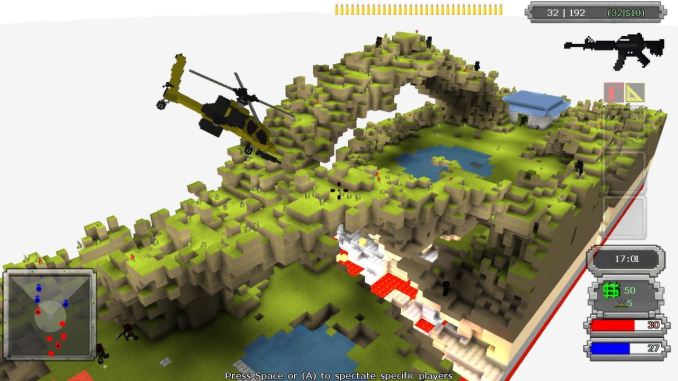
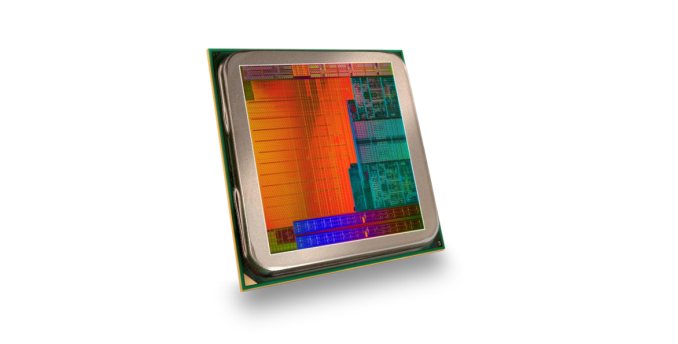

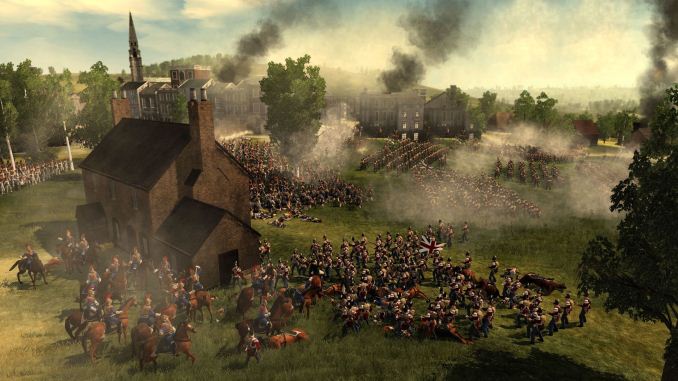
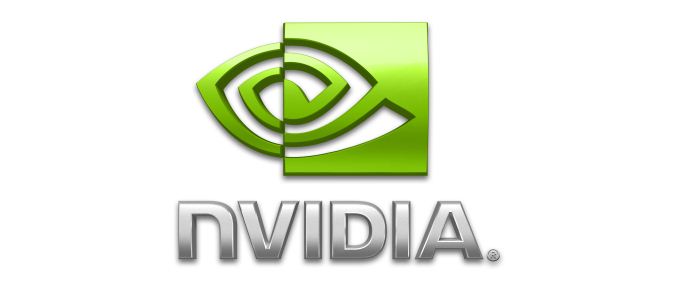

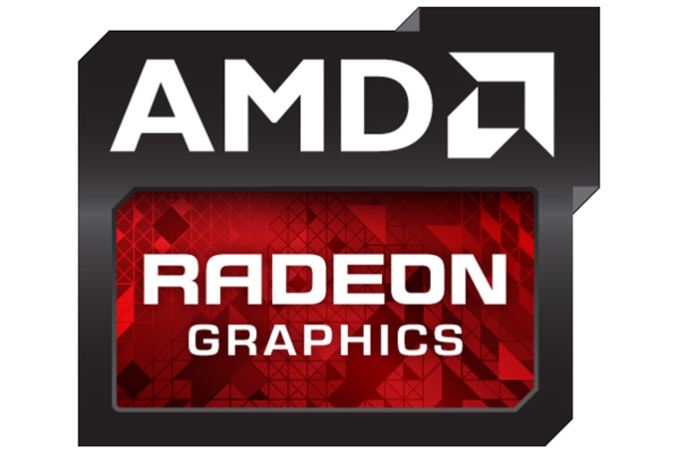
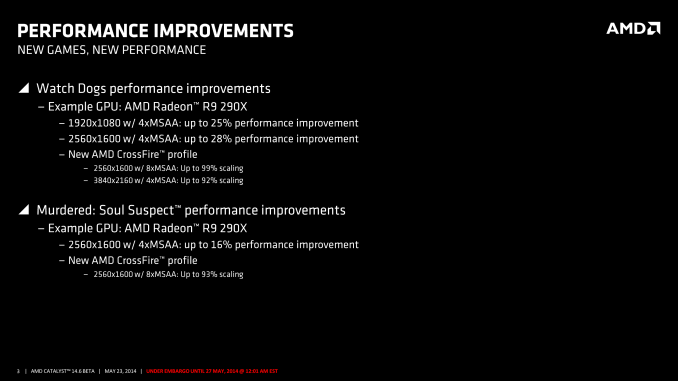
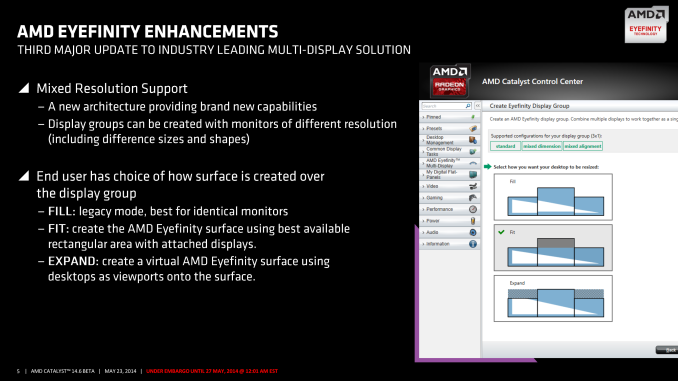
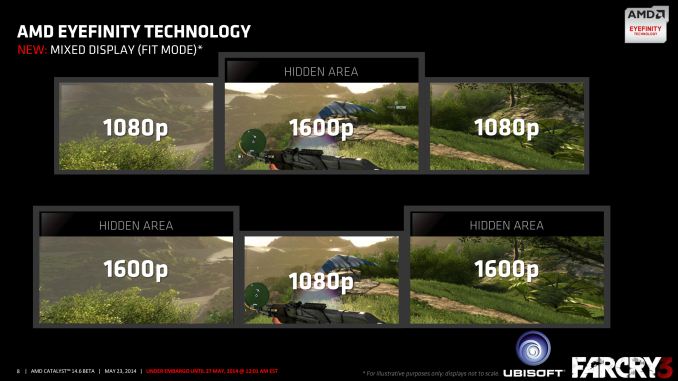
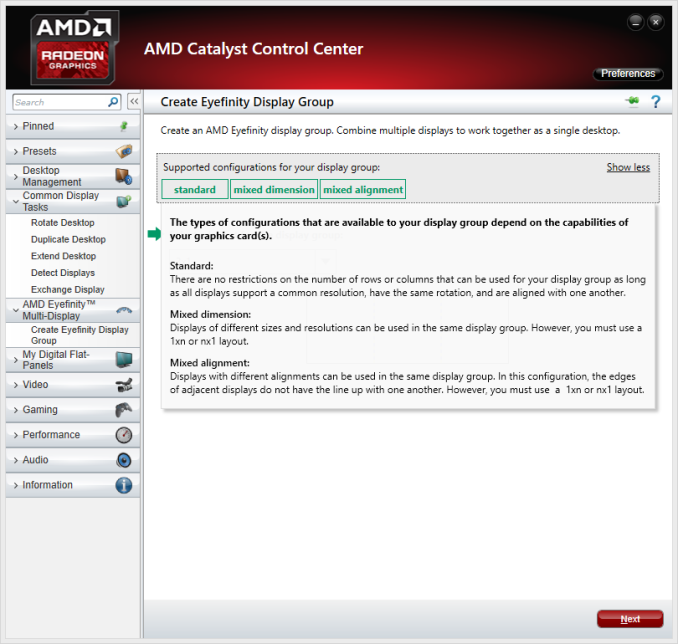
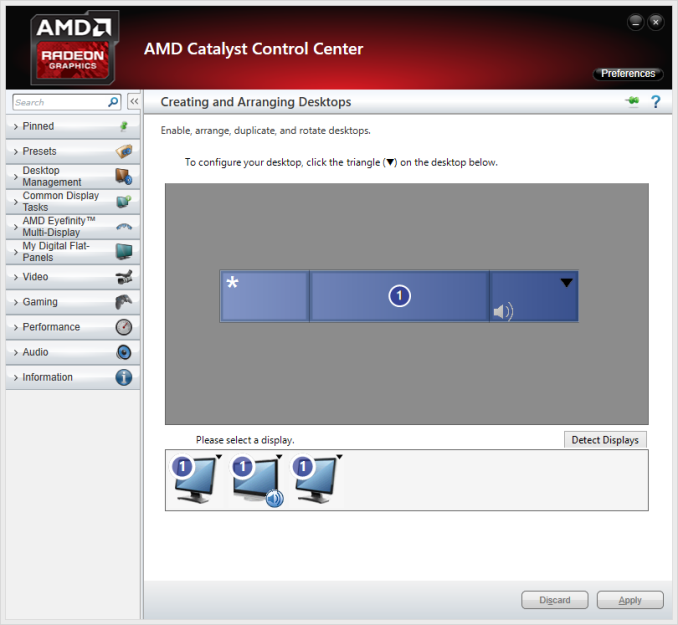
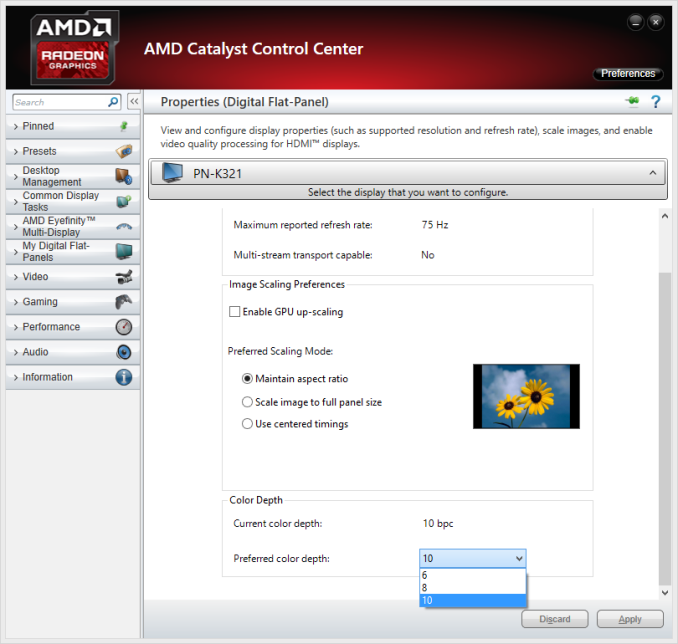
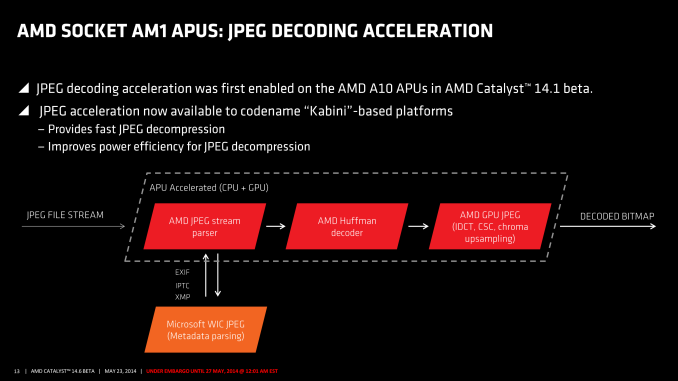

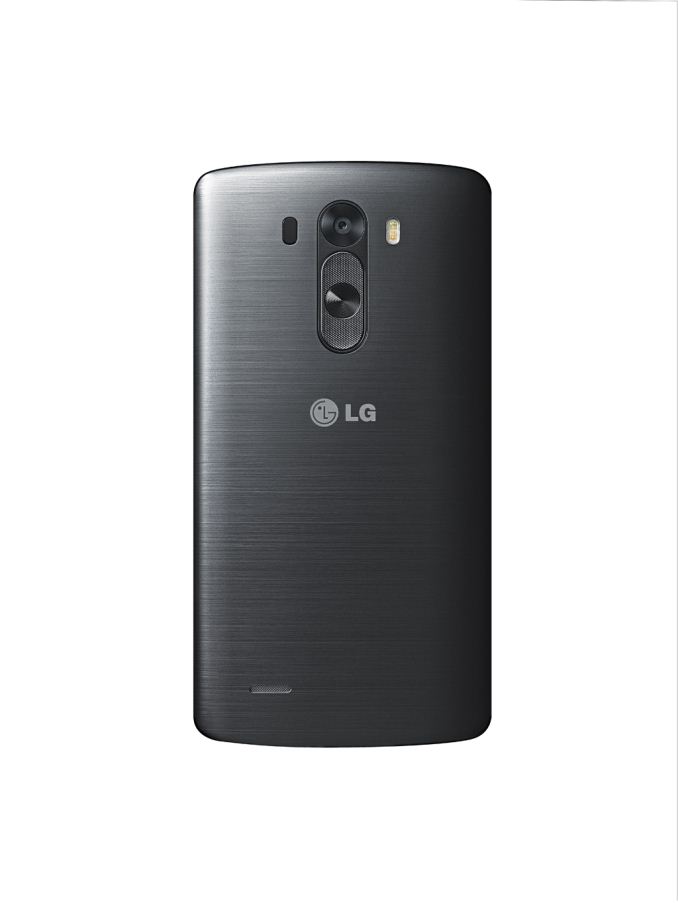
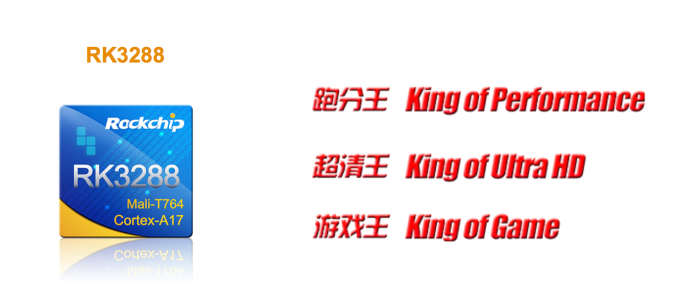

















Bookmarks